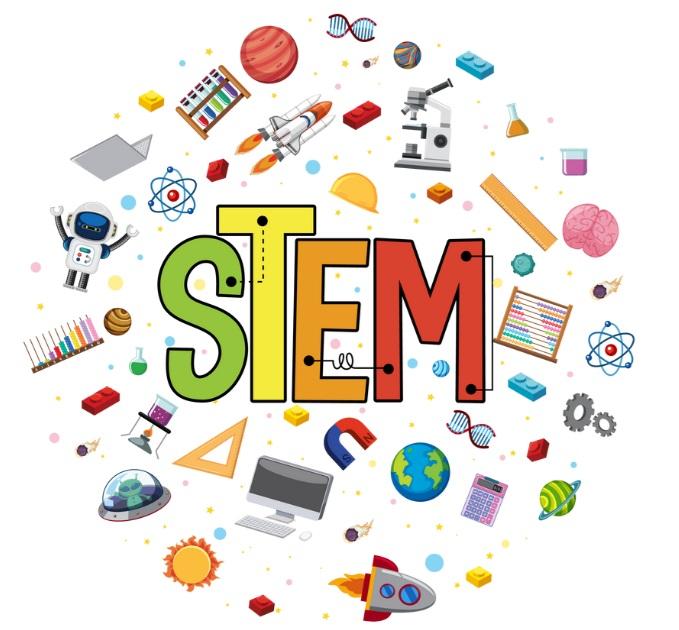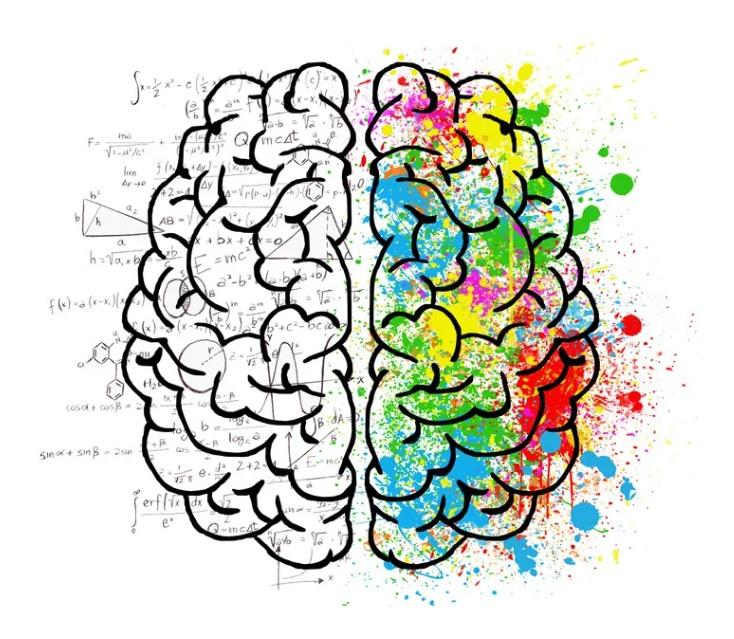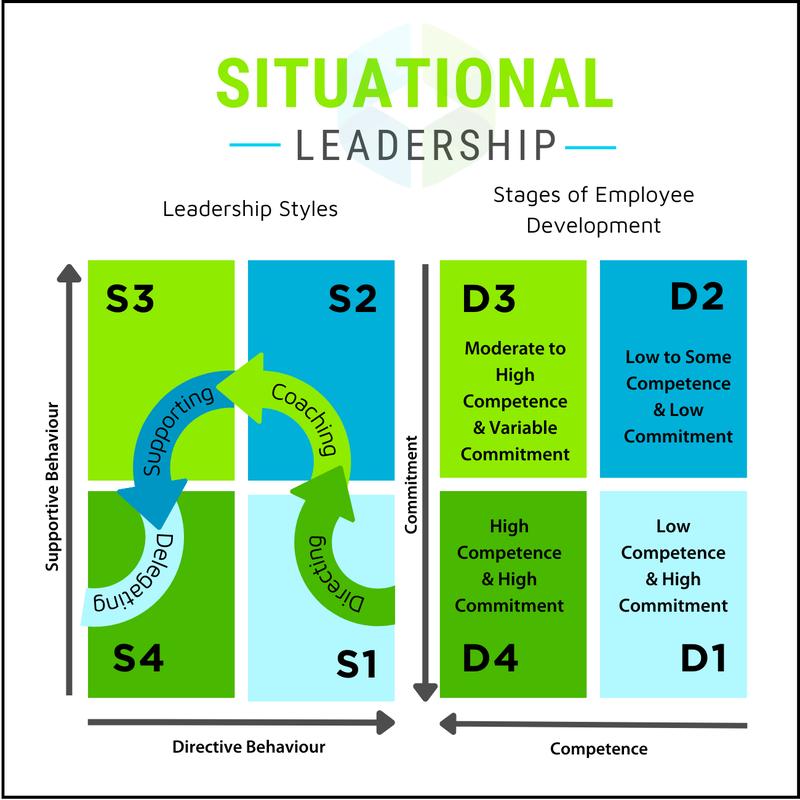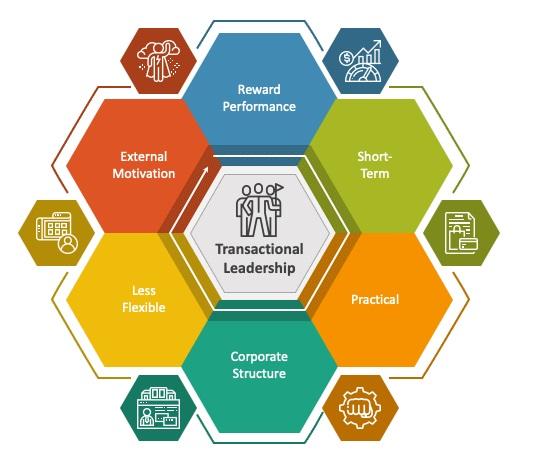Module 3
Digital STEM careers and leadership
Module description
This dynamic, self-paced module is designed to ignite your potential and equip you with the essential skills and mindset to become a trailblazer in the ever-evolving world of Digital STEM careers.
You'll gain valuable insights into various leadership styles, hone your communication prowess, and discover strategies for fostering innovation within diverse teams. In this module we will explore real-world examples and success stories of women who are shaping the future of technology, inspiring you to chart your own leadership course.
What to expect?
- Deeper knowledge on different leadership styles and practices.
- Ideas about the most important skills and mindset of a future STEM leader.
- Practical guidance to chart and plan your leadership journey!
Learning outcomes of the module:
In terms of knowledge:
- You will gain a deeper understanding of leadership in the context of Digital STEM careers.
- You will be able to identify different leadership styles and their applications in STEM fields.
- You will become familiar with the importance of diversity and its role in driving innovation.
In terms of skills:
- You will refine your self-assessment skills to identify areas for growth in your leadership development.
- You will gain practical strategies for building confidence and overcoming self-doubt.
In terms of Responsibility:
- You will develop a sense of responsibility for your own leadership development by actively seeking out learning opportunities and setting goals.
- You will develop a sense of responsibility for further development of your communication and advocacy for your own ideas in a professional setting.
In terms of Attitudes:
- You will increase your sense of confidence and self-belief in your ability to lead in the field of Digital STEM.
- You will develop an appreciation for diversity and be encouraged to collaborate to achieve common goals.
- You will develop a proactive and innovative approach to problem-solving within your future careers.
Decoding the Leadership in the Modern World
Leadership has been in the scope of much research during the last decade. Economists, psychologist, managers, HRs, University, even students at schools and universities, are talking about it (not counting media). As leadership is a complex phenomenon, which includes combination of variety of elements and processes, it could be difficult to set standard definition and frame, qualities or competencies that fully capture the nature of what makes some leaders and organizations successful.
What we know about traditional leadership and the way we think about it still bear the imprint of the past. With the digital revolution, however, even the idea of leadership has fundamentally changed.
It is no more the lone genius having break-through and making decisions that save the situation and “beat the bad guys”. Today we are talking more about collective leadership through personal impact and strengths of people in a community / organization or a team, rather than looking for the perfect single human being that would change the world alone and take us to a brighter future.
The development of technology has given a powerful impetus to science and its application in all spheres of familiar life - from daily routine actions to the discovery of new worlds.

Picture source: www.canva.com
This in turn has seen us witness the birth of many different businesses and activities that did not exist until recently. From Facebook and its various applications, through digital marketing, real-time online collaboration between scientists from around the world and much more.
People's ability to imagine and create new things has been unleashed and we increasingly think of ourselves as leaders as well. Leadership is no longer a trademark of certain people and it has transitioned into an integral aspect of our personal growth journey.
Leadership in Science, Technology, Engineering, and Math (STEM) fields doesn’t make an exception. STEM fields are complex and constantly evolving. No single person can possess all the knowledge and expertise needed for success. The effective leadership means the ability to use the diverse strengths of team members, creating an environment where everyone feels comfortable contributing their ideas and skills. This stems from the ability to communicate, collaborate, and foster innovation. If you and your people can easily, effectively, and respectfully communicate complex concepts, this will help to foster collaboration, and inspire buy-in from stakeholders for all new ideas and experiments you are up to. And we all know that experiments drive innovations.
Explore the following metaphor:
 Think of a successful STEM project as a 3D puzzle. The pieces of this puzzle are magical – they change their shape, content, and ability to connect to each other unpredictably. How would you approach this task?
Think of a successful STEM project as a 3D puzzle. The pieces of this puzzle are magical – they change their shape, content, and ability to connect to each other unpredictably. How would you approach this task?
Source: www.canva.com
- A traditional leader might try to connect the pieces together alone.
- A new collaborative leader, however, gathers a diverse team, fosters open communication, and empowers them to find the perfect pieces and fit them together creatively, leading to a breakthrough solution. A new leader empowers everybody in the team to become a leader. The key factors for this to occur include having an open mindset, practicing respect, fostering cooperation, and embracing a fresh vision of how things can be accomplished.
Question for self-reflection: When was the last time you did something differently from the traditional way? What qualities of yours and other circumstances helped you?
Example for successful leaders in digital STEM:
Dr. Jessica O. Matthews is a leader in the field of Artificial Intelligence (AI) safety and fairness. She co-founded Unanimous AI, a company that focuses on developing "swarm intelligence" – a form of AI that leverages the collective intelligence of a large group (think "hive mind"). Her leadership thrives on collaboration, bringing together diverse experts in AI, neuroscience, and philosophy to build safe and responsible AI systems.
Dr. Matthews also embodies fostering innovation, exploring new ways for AI to learn and make decisions, pushing the boundaries of the field.

Source: https://www.leadingauthorities.com/uk/speakers/jessica-o-matthews
Read an article: You can read an article about Dr Jessica O. Matthews and other successful women in the following link: https://www.leadingauthorities.com/uk/speakers/jessica-o-matthews
Challenge yourself: When you hear/read the word scientist, what do you imagine?
Now watch the video and reflect on your own perspective of women’s contribution in the development of our world!
Women in STEM 2023 (Video, English, 3:27 min), https://www.youtube.com/watch?v=PbyKKD7mvpA
Leadership Styles & Theories behind
Although today's successful leaders are different from the traditional ones, we believe that knowing some basic leadership theories and models can help you build a more accurate picture of your own capabilities, attitudes and skills for a successful digital STEM career.
We will review the following leadership theories and track their evolution over the years:
- “Great man” notion of heroic leaders
- Trait theories
- Behaviourist theories
- Contingency and Situational leadership
- Transactional and Transformational leadership

Source: www.canva.com
You may find different insights into the leadership and even to elaborate your own definition that suits your unique characteristics and goals.
Most theories present a range of leadership and management frameworks in organizations and business. Our purpose is to exceed this level. We would like to invite you to a personal adventure in finding your own leadership potential and becoming a leader of your own life and future professional career.
The Evolution of Leadership
The leadership has evolved from Trait theories to Transformational leadership. Thus, the early focus was upon the characteristics and behaviours of successful leaders, and later – on the role of the contextual nature of leadership. Every leadership theory is associated with distinctive traits exhibited by successful leaders, as well as the optimal contexts in which these theories yield the most favorable outcomes.
Despite the theories, people are different and may engage more and operate better under different leaders and leadership styles. Some may find that having clear instructions and expectations, certain rules, and behaviour (Authoritarian Leadership Style), is better for them and stimulates all their energy to perform the best. Others, on the other hand, may find this restricting and may need more freedom and creativity in their work (Democratic Leadership), to perform better and achieve goals. Some individuals value leaders who actively engage in the process of identifying solutions, assisting and encouraging team members, and actively participating in discussions (Participative Leadership). These preferences come out of individual brain neuro-design and its plasticity which is a combination of biological factors and social development of someone. There is no right and wrong here. The important part is to understand your own design and preferences for to be able to use greater part of your talents and skills. And those of your team members, of course.
 To be a good leader of your own and others demands more than knowing the leadership theories and styles. You need to know more about yourself, more about people in general (biology and psychology) and more about business and life. It sounds complicated but we can start from the very first thing we have in hand – ourselves.
To be a good leader of your own and others demands more than knowing the leadership theories and styles. You need to know more about yourself, more about people in general (biology and psychology) and more about business and life. It sounds complicated but we can start from the very first thing we have in hand – ourselves.
Picture source: www.canva.com
Great Man Theories and Trait Theories
According to Great Man Theories and Trait Theories , great leaders are born with the necessary internal characteristics such as charisma, confidence, intelligence, and social skills, or some traits like extroversion, self-confidence, and courage that make them natural-born leaders. Such theories suggest that people cannot really learn how to become strong leaders. It's either something you are born with or born without. It is very much a nature (as opposed to nurture) approach to explaining leadership.
In fact, this theory traces back to ancient Greek and Roman times, where leadership was associated with distinctive mental, physical, and personality traits that were considered divinely bestowed.
 Challenge yourself: Do you know people around you that you can tell were born to be leaders? Make a list with their mindset, beliefs, behaviour, characteristics! What can you learn from them?
Challenge yourself: Do you know people around you that you can tell were born to be leaders? Make a list with their mindset, beliefs, behaviour, characteristics! What can you learn from them?
Source: www.canva.com
Contingency and Situational Leadership Theories
The Contingency Leadership theories center around specific environmental variables that influence the most suitable leadership style for a given situation, recognizing that these styles can significantly differ.Here it is not just about the qualities of the leader, but the right balance between behaviours, needs, and context. These theories suggest to choose the best course of action based upon situational variables. The right style of leadership depends greatly on the maturity level (i.e., the level of knowledge and competence) of the individuals or group:
- Low maturity of people requires a leader that tells people what to do and how to act;
- Medium maturity requires the leader to inspire (to sell the idea) and to involve people and also to encourage people to take an active role in coming up with ideas and making decisions;
- High maturity requires more delegating leadership style and so-called hands-off approach.

Source: https://www.entegrys.com/situational-leadership-part-1-a-valuable-tool-for-managers/
Exercise: Read the article about the Situational Leadership II (or SLII model) that was developed by Kenneth Blanchard. According to the revised version of the theory, effective leaders must base their behaviour on the developmental level of group members for specific tasks.
Question: When is it appropriate to apply coaching style of leadership?
“Situational Leadership Theory”, https://www.verywellmind.com/what-is-the-situational-theory-of-leadership-2795321
Behavioural Theories
Unlike the first two groups of theories, behavioural theories of leadership are based upon the belief that great leaders are made (people can learn to become leaders through teaching and observation), not born. This leadership theory focuses on the actions of leaders, not on mental or personal qualities, or internal states. In this case the leadership is a skill, that can be practiced and develop.
Participative Theories
These theories suggest that the most successful leadership style involves others by encouraging participation, contribution, and commitment to decision-making process. As you have read above, it requires certain level of maturity – both from the leader and the others. Despite the natural preference to one or another leadership style, the participative approach can be utilised in most real life situations. You can build relationship and strong connections with people around you, showing them respect and encouraging them to grow. This approach is also a powerful source of learning for everybody, including the leader.
Management / Transactional Theories
This approach centers on empowering and collaborating with others. It recognizes that a leader’s role extends beyond mere authority, emphasizing a reciprocal contract where the leader provides rewards, recognition, and support in exchange for the dedication and loyalty of their team. In these theories you discover new elements like supervision, organization, group performance, contract, benefits. Here we have a manager and team members. No matter the leadership skills and potential of the leader, the team still could perform on high level, depending on the maturity and professionalism of everybody
Self-reflection: Would you rather work for an organization that invest in soft skills (soft skills are interpersonal abilities that enhance effective interaction with others, such as communication and adaptability skills) and leadership development of all people OR an organization that offers non or little development opportunities for managers only?
This could be a milestone in your decision-making process when choosing your next (first) employer!
 Source: https://www.collidu.com/presentation-transactional-leadership
Source: https://www.collidu.com/presentation-transactional-leadership
Relationship / Transformational Theories
These theories focus upon the connections between leaders and other people. Here, finally, we find leaders that motivate and inspire people by helping them to see the importance and the higher good of their efforts. And by helping them to develop their own potential. Leaders with this style often have high ethical and moral standards.
Exercise: Read the article: “The 4 I’s of Transformational Leadership” (Intellectual Stimulation, Individual Consideration, Inspirational Motivation, Idealized Influence), https://www.michiganstateuniversityonline.com/resources/leadership/4-is-of-transformational-leadership/
Question: Reflect on your own behaviour. Do you apply some of these “4 I” for advancing in your career, study, relations with others? How do they help you?
Summary of Leadership Theories
To sum it up leadership is a complex mixture of many environmental factors, personal treats, sometimes chance, that help determine why some people become great or better leaders than others. Learning more about the subject is a way of improving and developing your own skills and potential to be a leader of your life. Are you curious?
Exercise: Using the information given in this module, create your own definition of the perfect leader for you as a young specialist in STEM.
Then create a description of the leader you want to become.
Reflect on how your style would support your future team. What kind of a team would suit you the most?
Building Your Leadership Foundation
Personal leadership development is a process, a path, a way to think and live your life. It begins with a few simple steps:
- Study and develop understanding of yourself.
- Find proper external support (courses or training programmes).
- Choose to be your own life coach and pursue your customized leadership path toward your desired life and a successful career in digital STEM fields
- Find a project or employment form that will enable you to apply your knowledge and to turn it into habits.
Exercise: Take the online quiz “What's Your Leadership Style?”, to discover your natural preferences in leading others (5 min)
https://www.verywellmind.com/whats-your-leadership-style-3866929?quizResult=705ec57c
Find out more about the impact of your leadership style both in and out of the workplace in the information that follows your results!

Source: www.canva.com
Must have leadership skills and mindset in the digital STEM world
If you choose to take the route of leadership in the digital STEM sector, a good personal development leadership program should cover the following basic areas:
- Discover and assess your personal strengths and weaknesses; style and preferences; goals and vision, etc.
- Strategies to grow and play your strengths more on daily basis (this is a way your brain to support the process better, according to neuroscience).
- Understanding how beliefs and prejudice limit or format your way of thinking and acting.
- Identifying what keeps people from reaching their goals and what steps you can take to move towards your goals.
- Action plan for development of new habits that support your goals.
- To keep your personal state of balance and harmony between professional, personal, and gamily/significant others time.
- To learn to have a long-term vision of life.
- And many other topics that would pop-up with the process.
Along the way you will need to develop the following skills and mindset:
- Communication: Focus on development of effective communication skills for active listening, strong presenting skills and especially presenting technical concepts and innovative ideas, negotiating ideas, leading teams, and supporting teamwork, development, and respect. Adapting your communication style (tone, level of detail) to suit the specific audience and their technical background.
- This also means to be able to use digital state-of-the-art tools, AI, and different online communication platforms and social media, to analyse big data, create content (written and video), to prioritize and to keep your promises.
- Plus, you will need some psychology knowledge and best practices in your field, which means you need to create and maintain your professional network. You can expect totally new professional areas for development, regarding the relationship between humans and AI.
- Don’t be surprised, but you will need to develop your skills to organize and keep accurate and concise documentation, reports, manuals. Which means strong writing skills as crafting compelling emails, reports, proposals, and presentations tailored to the audience and purpose.
- Confidence & Self-Advocacy: Explore strategies for building confidence, overcoming self-doubt, and advocating for your ideas in male-dominated fields.
- Use the Power of Diversity: Highlight the importance of diverse perspectives in problem-solving and innovation within STEM teams.
- Leading Collaborative Teams: Discuss strategies for effective team development, delegating tasks, and fostering a positive and inclusive team environment.
- Visionary Thinking: Explore how strong leaders envision the future and inspire others to work towards ambitious goals within STEM fields.
- Intrapreneurship: Introduce the concept of intrapreneurship, where you can champion innovative ideas within an existing organization.

Source: www.canva.com
Example: As a leader in digital STEM professions, you’ll contribute to your team’s growth by designing diverse programs, scenarios, skill-building initiatives, fostering a growth mindset, and promoting strong team cohesion.
We asked gemini.google.com to help us to create a scenario for this module for you. Check it by yourself and reflect on your leadership approach to better understand your strengths and areas for improvement. After the end of this exercise, develop your skills and try to create your own scenario using Gemini. You can get a glimpse of how the power of AI can help you on your journey.
Real-World Challenge Scenario for practicing leadershi: The AI Glitch (Cybersecurity)
The Year: 2042
The Situation: You are a cybersecurity analyst working for a leading smart city infrastructure company, Green City Solutions. Your team is responsible for maintaining the security of the city's intricate network of interconnected systems - from traffic management to energy grids, all powered by advanced AI.
The Challenge: A critical glitch has been detected in the AI system that manages the city's automated waste collection trucks. The malfunction is causing erratic behaviour, with trucks taking unpredictable routes and missing scheduled pickups. This is causing chaos across the city, with overflowing trash bins and potential sanitation hazards.
Your Team:
- You: Cybersecurity Analyst (strong technical skills, some communication experience)
- Aisha: AI Engineer (expert in the AI system, introverted and shy)
- David: Project Manager (excellent communicator but limited technical knowledge)
The Task:
- Immediate Actions: You need to quickly contain the situation and prevent further disruption. This might involve taking some of the affected trucks offline temporarily. However, communication is crucial to avoid creating panic or hampering essential city services.
- Root Cause Analysis: Work with Aisha, the AI engineer, to diagnose the source of the glitch. You may need to explain technical concepts to David in terms he can understand, so he can effectively report the situation to higher management.
- Solution Development: Collaborate with Aisha to develop a solution to fix the glitch permanently. This might involve a software update or reconfiguring certain parameters within the AI system.
- Communication & Transparency: Throughout the process, you and David need to maintain clear and transparent communication with city officials and the public. This involves explaining the situation, outlining the steps being taken, and providing estimated timelines for when normal service will resume.
Building Your Skills:
This scenario challenges you to apply your communication and confidence-building skills in several ways:
- Clear & Concise Explanations: Explain the technical glitch to David, who doesn't have a strong technical background.
- Active Listening & Teamwork: Collaborate effectively with Aisha, drawing on her expertise while remaining sensitive to her introverted nature.
- Confident Communication: Present the situation and proposed solutions to city officials and the public in a clear, concise, and reassuring manner.
Bonus Challenge: Develop a social media strategy to keep the public informed about the situation and address any concerns or anxieties.
By successfully resolving this real-world scenario challenge, you'll demonstrate the essential communication and confidence-building skills needed to thrive as a leader in future digital STEM professions.
Charting Your Leadership Journey

Source: www.canva.com
Now you are ready to chart your own leadership course. Follow these three steps that help you to get started:
- Map out possibilities to find a personal mentor or to join a mentorship programme
To develop yourself as a leader in the digital STEM world, you will need to rely on other professionals and learn from their experience and knowledge. Overall, mentorship is an invaluable tool for women who aspire to pursue leadership roles in STEM.
Mentorship programme can provide you with:
- Guidance and feedback on your leadership style, decision-making skills, and strategies for navigating complex situations.
- Role Modelling by observing a successful leader in action, allowing you to learn by example and understand how to apply leadership principles in practical scenarios.
- Challenge and Support: Mentors can push you outside your comfort zone, encouraging you to take on new challenges and responsibilities that can accelerate your leadership development. However, they also offer support and encouragement during challenging times, fostering your confidence and resilience.
- Building a Strong Network: Mentors can introduce you to other professionals in the field, expanding your network and building valuable connections. These connections can lead to future job opportunities, collaborations, and access to new ideas and resources.
- Industry Insights and Advice: Mentors can provide valuable insights into the current state of the industry, future trends, and career paths within STEM. This knowledge can help you make informed decisions about your career goals and development.
- Confidence Building: Mentorship can provide you with a safe space to discuss challenges and receive guidance, which can significantly boost confidence and self-belief.
- Community and Belonging: Mentorship programs can foster a sense of community and belonging, allowing you to connect with others facing similar experiences and challenges.
- Build up Your Personal Brand:
In the digital age, crafting a powerful personal brand is essential for anyone aspiring to attain leadership in STEM fields. Here are some strategies to showcase your skills, experience, and leadership potential:
- Create a website or online portfolio.
- Engage on social media and utilise joint professional groups you can find there
- Publish articles on relevant websites or blogs.
- Share your success stories and don’t forget to give credit to all the participants.
- Attend Industry Events like conference, workshops, discussions, introduce yourself and build relationships.
- Volunteer your skills.
- Be consistent and stay updated!
- Action Plan:
To start your leadership journey, you may need a map with the main points to cover. You can use different tools like mind-mapping online platforms. Be sure to include these main aspects:
- Self-assessment.
- Goal setting.
- Interns and mentorship programs (find your mentor and set meaningful goals).
- Practice leadership in different roles.
- Track your progress.
- Develop a Personal Development Portfolio (Leadership diary)
- Networking.
- Keep learning!
Quizzes
External resources
Why Does Personal Leadership Matter? https://leadershipexcellencenow.com/blog/what-is-personal-leadership-and-why-does-it-matter/
How Does Personal Leadership Development Work? https://leadershipexcellencenow.com/blog/what-is-personal-leadership-development-and-why-is-it-important/
The Major Leadership Theories, https://www.verywellmind.com/leadership-theories-2795323
Leadership Redefined: The 30 Best Leadership Practices (Inspire, Empower, Innovate), https://www.pniconsulting.com/articles/leadership-redefined
Self-assessment quiz: What Sort of Leader are You? https://www.skillsyouneed.com/quiz/325444
Self-assessment quiz: What's Your Leadership Style? https://www.idealist.org/en/careers/quiz-leadership-style
The Rise Of Women In STEM In 2024, https://www.securemyscholarship.com/blog/the-rise-of-women-in-stem
(Video, 12 min) The Unicorn Dilemma: Increasing the Number of Women in STEM | Meghan Goldfarb | TEDxNormal, https://www.youtube.com/watch?v=tyEGlyPGjXI